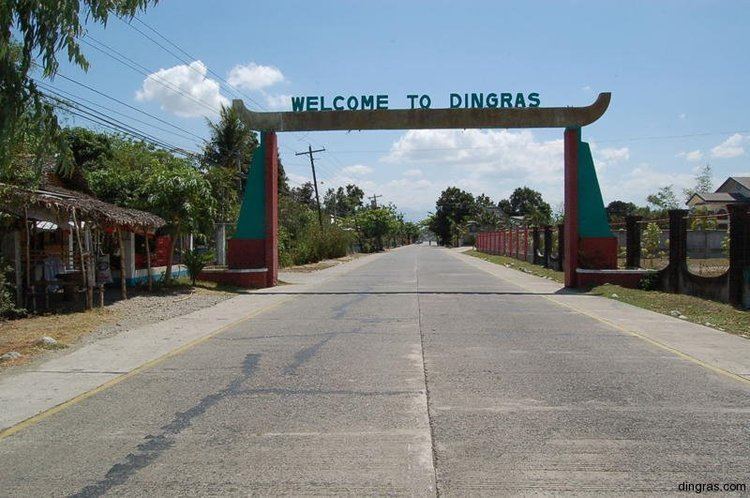Country Philippines District 2nd District Barangays Area 96 km² Province Ilocos Norte | Region Ilocos (Region I) Founded 1598 Time zone PST (UTC+8) Local time Wednesday 6:45 AM | |
 | ||
Weather 21°C, Wind NE at 0 km/h, 90% Humidity | ||
Madongan dam dingras ilocos norte
Dingras is a second class municipality in the province of Ilocos Norte, Philippines. According to the 2015 census, it has a population of 38,562 people.
Contents
- Madongan dam dingras ilocos norte
- Map of Dingras Ilocos Norte Philippines
- Madongan dam san marcelino dingras ilocos norte
- Barangays
- History
- Demographics
- Longest Bibingka
- References
Map of Dingras, Ilocos Norte, Philippines
The Municipality of Dingras has a total area of 17,962 hectares, ranking 8th in size among the 23 municipalities including Laoag City. It accounts for practically 5.2% of the total land area of Ilocos Norte and corresponding percentage to the municipal area composed of thirty one (31) barangays. Six (6) are on the Poblacion and twenty five (25) in the rural area. Out of the total area 6,305 hectares is devoted to rice and corn production. Other non-productive areas are devoted to livestock production, swine production and other livelihood projects. Most of the population are engaged in farming as the primary source of income.
Madongan dam san marcelino dingras ilocos norte
Barangays
Dingras is politically subdivided into 31 barangays.
History
The Legend of DINGRAS
As in other communities, the town of Dingras has an interesting legend as to how its name evolved. The legend, as handed down from generation to generation, was classically romantic, a gallant heir - warrior fighting for a lady’s love.
In the early times, there were two prosperous barangays in the present site of the town each one ruled by a powerful chief or datu. They were bitter and mortal enemies. Naslag was the powerful chief of the barangay north of the river while Allawigan was the chief of the south of the river. One day, Allawigan and his warriors went to hunt. Rass, his son, was the bravest among them. During the hunt, Ras followed the deer, which went north across the river. While he was watching the fleeing deer, he saw a beautiful damsel gathering wild flowers on the opposite side of the riverbank. She was Ding, the daughter of Naslag. To help the lady, Ras gathered the most beautiful flowers near him; put them at the head of his arrow and shoot near the lady’s feet. Ding looked at the other side of the river and waved her hands. Ras went home happily.
Ras begged his father for permission to win Ding for his wife. But because the fathers of Ding and Ras were bitter enemies, the only way he could win her was in the open battle fiercely fought between the two tribes. Ras led his father’s warriors. They fought valiant and came out victorious in the end. Ras asked for Ding as a prize but Naslag refused. This angered him and hurled a challenge to the bravest warrior of Naslag in single combat with Ding as prize. The challenge was accepted. The combat was fought, and again, Ras was victorious. He brought Ding triumphantly to Allawigan, his father. Thereafter, the people named the two barangays Dingras, after Ras, their valiant warrior ruler, and Ding, his beautiful wife.
Demographics
In the 2015 census, the population of Dingras was 38,562 people, with a density of 400 inhabitants per square kilometre or 1,000 inhabitants per square mile.
Longest Bibingka
On October 9, 2007, Dingras, Ilocos Norte, Philippines eyed a "Guinness World Records" certification after baking a kilometer-long "bibingka" (native cake) made from 1,000 kilos of cassava and eaten by 1,000 residents.
